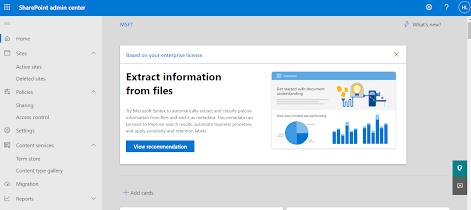OOPS Concept - Static class and static constructor
This post is about refreshing couple of basis rules/points in respect of OOPS. Considering C# as one of the languages which support OOPS, following points has been described.
Let's start wih the concept.
A static class is basically the same as a non-static class, but there is one difference: a static class cannot be instantiated. You need to call class.method directly like Math.Abs() or Math.Floor().
Creating a static class is basically the same as creating a class that contains only static members and a private constructor. A private constructor prevents the class from being instantiated.
- A typical use of static constructors is when the class is using a log file and the constructor is used to write entries to this file.
- Static constructors are also useful when creating wrapper classes for unmanaged code, when the constructor can call the LoadLibrary method.
- Static constructors are also a convenient place to enforce run-time checks on the type parameter that cannot be checked at compile time via type-parameter constraints.
A static constructor is used to initialize any static data, or to perform a particular action that needs to be performed only once. It is called automatically before the first instance is created or any static members are referenced.
public class MyFactoryBase
{
static MyFactoryBase()
{
Console.WriteLine("Static constructor of MyFactoryBase");
}
public virtual void WriteLogmessages()
{ Console.WriteLine("Base method MyFactoryBase"); }
}
Below are some important points:
- A static constructor doesn't take access modifiers or have parameters.
- A class or struct can only have one static constructor.
- Static constructors cannot be inherited or overloaded.
- A static constructor cannot be called directly and is only meant to be called by the common language runtime (CLR). It is invoked automatically.
- The user has no control on when the static constructor is executed in the program.
- A static constructor is called automatically. It initializes the class before the first instance is created or any static members declared in that class (not its base classes) are referenced. A static constructor runs before an instance constructor.
- If you don't provide a static constructor to initialize static fields, all static fields are initialized to their default value.
- If a static constructor throws an exception, the runtime doesn't invoke it a second time, and the type will remain uninitialized for the lifetime of the application domain. Most commonly, a TypeInitializationException exception is thrown when a static constructor is unable to instantiate a type or for an unhandled exception occurring within a static constructor.
- The runtime calls a static constructor no more than once in a single application domain. That call is made in a locked region based on the specific type of the class.
- Contains only static members.
- Cannot be instantiated.
- Is sealed.
- Cannot contain Instance Constructors.
- The compiler can check to make sure that no instance members are accidentally added.
- The compiler will guarantee that instances of this class cannot be created.


Comments
Post a Comment